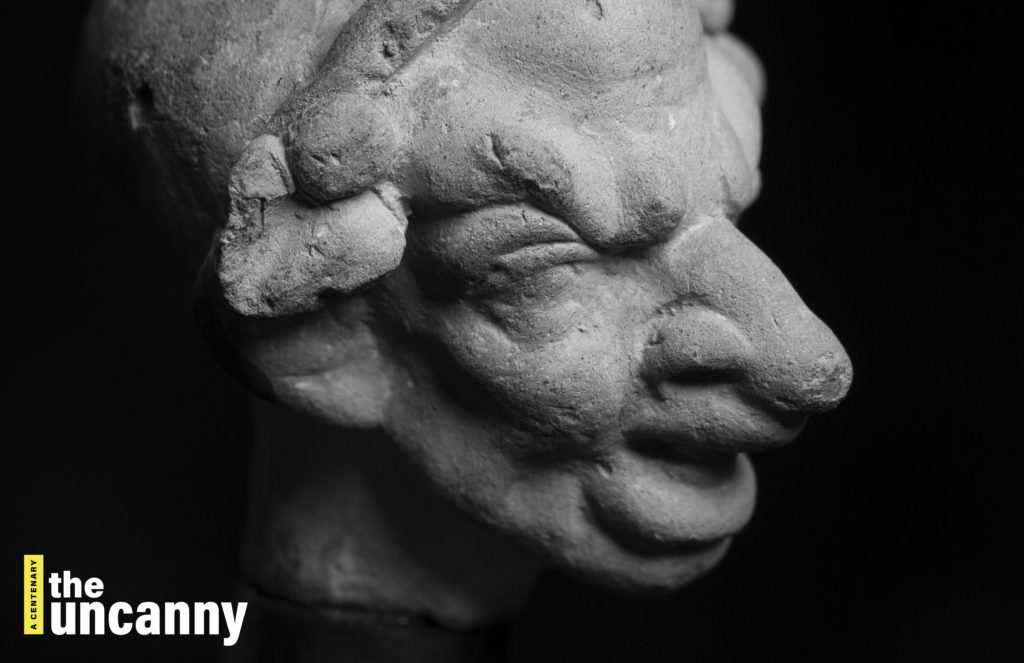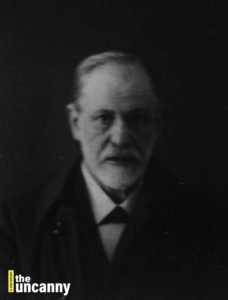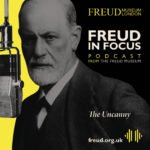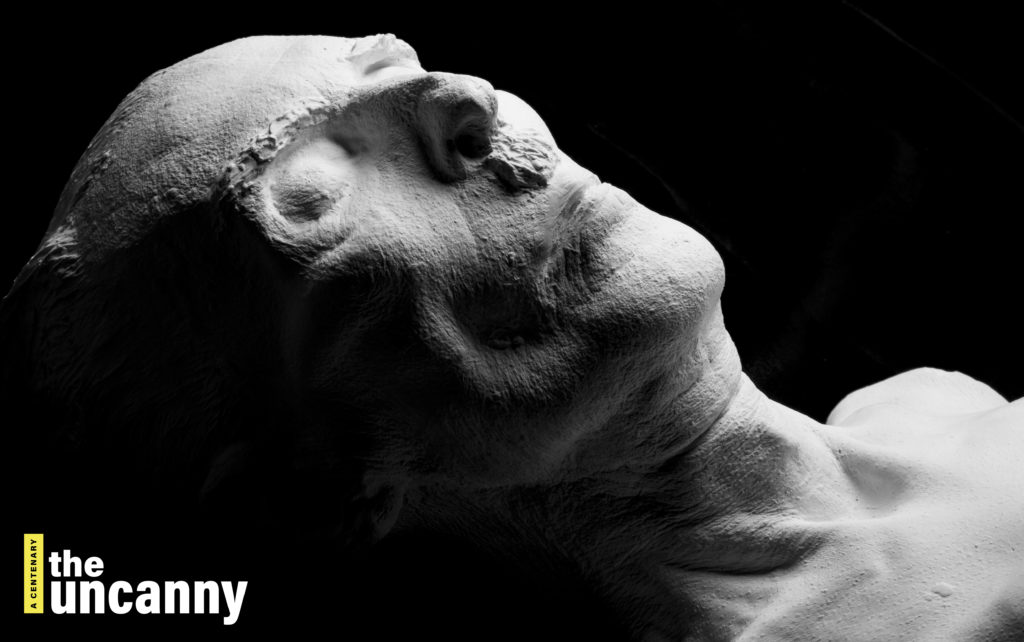The Uncanny
One hundred years ago, Sigmund Freud wrote his paper on ‘The Uncanny’ (Das Unheimliche). His theory was rooted in everyday experiences and the aesthetics of popular culture, related to what is frightening, repulsive and distressing.
The paper tackles the horrific concepts of inanimate figures coming to life, severed limbs, ghosts, the image of the double figure (doppelgaengers) and lends itself to art, literature and cinema.
Essay In Two Parts
Freud’s essay is written in two parts. The first part explores the etymology of the words ‘heimlich’ and ‘unheimlich’ (or ‘homely’ and ‘unhomely’, as it directly translates into English), their uses in the German dictionary and how these words are used in other languages. This must have been an unimaginable challenge for the translator!
In the second part, Freud begins to tackle people, things, self-expressions, experiences and situations that best represent the uncanny feeling.
Freud’s paradigm example is the short story of E.T.A. Hoffmann’s ‘The Sandman’, a tale that parents would tell their children to encourage them to go to sleep. The story goes that the child must be asleep for the Sandman to put sand in the child’s eyes – if they are not asleep, the Sandman will take out their eyes. The protagonist is a boy named Nathaniel whose fate eventually does fall to the Sandman, losing not only his sight but his sanity, then his life. Freud asserts that the removal of the eyes alludes to an infantile fear of castration, but the castration complex is masked by a fear of losing a different sensitive organ: the eyes. This same theme is present in the tragedy of Oedipus.

Doppelgaenger
Freud also touches upon the notion of ‘the double’ or, as it is better known, the doppelgaenger, first explored in the psychoanalytic literature by Otto Rank in 1914. Freud writes that doppelgaengers can be found in:
Mirrors, shadows, guardian spirits, with the belief in the soul and the fear of death. The idea of the eternal soul allows us an energetic denial of the power of death. This was the first double of the body. From having been an assurance of immortality, it becomes the uncanny harbinger of death. (p. 235)
“Uncanny is in reality nothing new or alien, but something which is familiar and old-established in the mind and which has become alienated from it only through the process of repression.”Sigmund FreudOne only needs to think of Stanley Kubrick’s cinematic horror adaptation of Stephen King’s ‘The Shining’. An eerie mansion, haunted by people known to have died, whose mutilated figures still appear in the grounds where they were murdered. These are doubles, other versions of themselves. We see them moving, but are they alive or dead? Many people experience the uncanny to its highest degree with death, dead bodies and the return of the dead. This fear stems from the fact that nobody can truly grasp their own mortality.
Freud writes:
We can understand why linguistic usage has extended das Heimliche into its opposite, das Unheimliche; for this uncanny is in reality nothing new or alien, but something which is familiar and old-established in the mind and which has become alienated from it only through the process of repression. (p. 241, SE XVII)
Through this process, we can see that the nature of the uncanny is entirely subjective, based upon our own experiences but haunts each of us to varying degrees.
By Jamie Ruers, Freud Museum Researcher
Buy The Uncanny by Sigmund Freud from the museum shop now.
Examples of the Uncanny
 Examples of situations that can provoke an uncanny feeling include inanimate objects coming alive, thoughts appearing to have an effect in the real world, seeing your double (the doppelgänger effect), representations of death such as ghosts or spirits, and involuntary repetitions. The uncanny arises when childhood beliefs we have grown out of suddenly seem real. Freud called it ‘the return of the repressed’.
Examples of situations that can provoke an uncanny feeling include inanimate objects coming alive, thoughts appearing to have an effect in the real world, seeing your double (the doppelgänger effect), representations of death such as ghosts or spirits, and involuntary repetitions. The uncanny arises when childhood beliefs we have grown out of suddenly seem real. Freud called it ‘the return of the repressed’.
The Uncanny in Art
Waxwork dolls, automata, doubles, ghosts, mirrors, the home and its secrets, madness and severed limbs are mentioned throughout The Uncanny, influencing painters and sculptors to explore these themes and blur the boundaries between animate and inanimate, human and non-human, life and death.
Podcast: Freud in Focus 2
 Listen to the Second Series of our podcast ‘Freud in Focus’. We discuss Freud’s fascinating foray into the field of Aesthetics, ‘The Uncanny’. The series is presented by Tom DeRose and Jamie Ruers.
Listen to the Second Series of our podcast ‘Freud in Focus’. We discuss Freud’s fascinating foray into the field of Aesthetics, ‘The Uncanny’. The series is presented by Tom DeRose and Jamie Ruers.





Comments
what is the title of the first piece in the photograph in the blog on the uncanny in your website? (i.e. the sculpture of the life-size man lying down, death). thank you !
It is the Death Mask of the Wolf Man, Sergei Pankejeff.
Hi! Fascinating post! Hoffmann’s ‘The Sandman’ has proven in my experience to be especially good for analysing the familiar yet somewhat unknown presences we might encounter in our lives. What in your opinion are good examples of the Uncanny in literature?
Thanks for your message! My favourite example is The Double by Dostoyevsky. The story begins with the protagonist who finds himself compelled to confront a familiar figure he sees in the distance, who turns out to be himself. This is an unbearable experience and the whole story continues with many twists and turns (I won’t ruin it!). I think it’s not only a good example of doppelgaengers but this is a familiar scene for most people in dreams. This then becomes a nice example of the uncanny nature of dream scenes and nightmares. Do you have any other recommendations yourself, Isabelle?
Does anyone else have a favourite example of the uncanny in literature? Please join in the discussion!
Very interesting subject! Do you have examples of the use of The Uncanny in television shows?
Almost all, if not all, episodes of “The Twilight Zone”. One I would suggest is “The Living Doll”, it features a talking, sentient doll named Talky Tina. I won’t spoil the ending though.
Hi, I’m currently looking at examples of the uncanny in gothic literature, for example its occurrence in the iconography of the haunted house – looking specifically at The Haunting of Hill House. I was wondering, what translation of Freud’s Das Unheimliche do you quote in this article?
Hi Lucy! We use the Standard Editions for quoting Freud. For the full reference: Freud, S., Standard Edition XVII (1917-1919), “On Infantile Neurosis and Other Works” (trans. Strachey, J) You can find the full citation and details here. Hope this helps!
Hi! I am currently writing my dissertation on the psychodynamics of Jacobean Revenge drama and am due to start an MA in Victorian Studies so I have some literary suggestions. Middleton’s Changeling is a great example of ‘doubling’ and the castration anxiety described in the article, especially in reference to eyesight. The Duchess of Malfi by Webster features some very interesting uses of wax work limbs and its very very creepy! The uncanniness of automatons is also used in Decadent literature a lot, especially Rachilde’s Monsieur Venus.
Fascinating information!!
To my mind, an excellent example of the uncanny appears in
F. Scott Fitzgerald’ s story, “One Trip Abroad.” This story has been particularly admired for Fitzgerald’s effective adaptation of the Doppelgänger device.
Obviously, I highly recommend this story.
Laura Rinaldi
Hi! This is the most understandable passage about the idea of the uncanny. I’m still reading Freud’s article about the uncanny though, and now i’m on the ‘double’ section. So, i’m writing my undergraduate thesis using the uncanny theory by Freud and taking H.P Lovecraft short stories as the main source for the analysis. Btw, i use 2 of Lovecraft short stories, Whisperer In The Darkness and At The Mountain of Madness which i think it would be good using this theory since the whole idea of the uncanny is ‘all that is terrible, arouses dread and creeping horror, whatever excites dread.’ So, do you think that most of Lovecraft works (especially those two short stories) are suitable for “the characteristics” of the uncanny? And if you were me, how would you analyze a literary work using the uncanny theory?
Thanks in advance!
What about the story of ‘the Nutcracker’ then? That is about toys and other objects coming alive!
Hi Gerda. That is a great question! The modern popularised versions of the Nutcracker (Tchaikovsky’s ballet or TV/Films adaptations) are in fact watered down versions of the original tale! Interestingly, the original ‘Nutcracker’ was written by E.T.A. Hoffmann, who also wrote ‘The Sandman’ which Freud analyses in his Uncanny essay. The original story was actually rather uncanny full of references to death and castration; mice have their tails chopped off and the dolls come alive when the protagonist, a little girl named Marie, cuts her arm and begins to have fever dreams from the blood loss (perhaps this is an allegory for the loss of her childhood…?). Throughout, Marie finds it difficult to differentiate between her fever dreams and reality. The story ends with one paragraph – sorry, a spoiler here – as Marie falls in love with the Nutcracker and goes to live with him in the Marzipan Kingdom forever. I’m sure wonderful papers have been written about why Marie stayed in the fantasy world 🙂
This is a welcome set of posts and comments. It seems to me that we are about to engage with the uncanny in the way the Freud would have hoped – facing the call to all embrace the reality of the all the things our “developed” judeo-christian-informed academic circles have rendered superstition and unscientific. Some hypotheses and questions arise for me.
This could be a time of awakening for organisations, individuals and society at large, as we turn and face the emergence of the unconscious in the age of AI.
The Chthonic turn, the hermetic gaze and the masonic philosophical position will have to find a new home side by side with the Judeo-Christian world view. It may also be seen as an ancestral healing of the legacy of the various Inquisitions led by the Vatican in centuries past that wiped out epistemologies rooted to the earth and non-human ways of Being.
May open a new perspective on climate peril, collapsing democracies and a host of other discontents of our (un)civilisation.
Lots of questions…..